Fashion month is around the corner. Officially beginning in New York (February 9-14), followed by London (February 16-20), Milan (February 20-26), and Paris (February 26 – March 5). Designers will preview their upcoming season’s collections for journalists, fashion buyers, celebrities, influencers, and fashionistas like you and me.
But do you know when the first fashion show was held, and how runway shows have evolved?
Let’s discover the history of fashion weeks in the 4 main fashion capitals of the world: New York, Milan, Paris, and London.
History of Fashion Week
To introduce you to the history of fashion week, let’s recall who was the first ever designer. Also, how collections were presented before fashion shows even existed.
The first-ever fashion designer
The 1850s saw the birth of the couture industry in Paris, with haute couturiers visiting clients at home for fittings. Charles Frederick Worth, regarded as the first fashion designer and the founder of Haute Couture, was the first to invite customers to his atelier at The House of Worth, which he founded in 1858 at 7, rue de la Paix.
What is a Salon Show?
Charles Frederick Worth was the first designer to have the idea of organizing events twice a year. He did this so all fashion clients could be in town at the exact same time to view the different collections at the houses’ ateliers. At the time, these events were not called “fashion shows” but “salon shows”.
The main goal of these “salon shows” was not that much for art purposes. Mainly to find clients and sell the collection. Worth started a new tradition of staging “salon shows” dedicated to a sole collection. They showcased a series of garments and designs unique to one collection only.
Where did the first fashion show take place? First fashion show in the U.S
In 1903, the Parisian tradition of showing customers the latest collections reached New York City. A shop called Ehrich Brothers organized the US’s first fashion show, as it is thought.
The difference between the shows of Charles Frederick Worth and his contemporaries and the event at the Ehnich Brothers and others who followed, were more artistic and theatrical, although not as much as nowadays.
The Ehnich Brothers’ show was a big success. As by 1910 department stores and designers all over the United States were holding their own shows. Then, by the 1920s, the fashion show was a well-established and recognized way to promote a collection.
Who attended fashion shows initially?
We have the image of fashion shows nowadays as big events. It has hundreds of attendees and even global sharing through social networks. But in the early 1900s, fashion shows – as we call them nowadays – were pretty intimate events. These were not open to the public.
You could rarely even have cameras at these events. Photographers were not allowed because of anxiety high about designs being copied. Fashion shows were thus reserved only for clients first and then open to journalists and buyers as well. They represented a personal presentation of the product line. This was done before it was put into production and not a full event like they are nowadays. It wasn’t until 1943 that the first fashion show in the modern sense of the term took place. It became the foundation of New York Fashion Week.
New York Fashion Week History
Who Founded Fashion Week?
New York is the home of the original Fashion Week, which was founded in 1943. Surprising it was not in Paris, right? Here is the story.
Until the 1940s, the fashion scene was concentrated in Paris. This was despite there were some shows in the U.S too, as we saw. American designers, editors, and buyers used to rely on the French fashion capital to look for fashion inspiration. But the arrival of World War II and the Nazi occupation happened. This then made it impossible for U.S. journalists to travel to Paris.
This is when Eleanor Lambert – the iconic fashion publicist who also started the International Best Dressed List, the Coty Fashion Critics’ Award (which later became the CFDA Awards), and The Met Ball – came along. She saw a unique opportunity to diverge the attention from Paris and grow the fashion week scene in New York. She launched the first “Press Week” in 1943.
Press Week
Press Week, (it’s how “New York Fashion Week” was originally known) called American designers to showcase their creations in their country. Also, they were to promote them to the public.
The Press Week was held at The Plaza Hotel. Eleanor Lambert paid both reporters from New York and from elsewhere in America to join. It was focused on the press only indeed; buyers had to schedule separate visits to showrooms.
By the mid-1950s, the event became known as “Press Week of New York.” Fashion editors from all around the world came to visit the American capital of fashion. The number of designers and shows continued to grow in the following years.

Credits:The Italian Rêve
The first designers to show during NYFW
Many homegrown designers eagerly took part in Press Week. These included Claire McCardell, Hattie Carnegie, Norman Norell, Pattullo Modes, and Nettie Rosenstein.
The event was a success, and photographs from several shows were featured in prestigious publications like Vogue and Harper’s Bazaar.
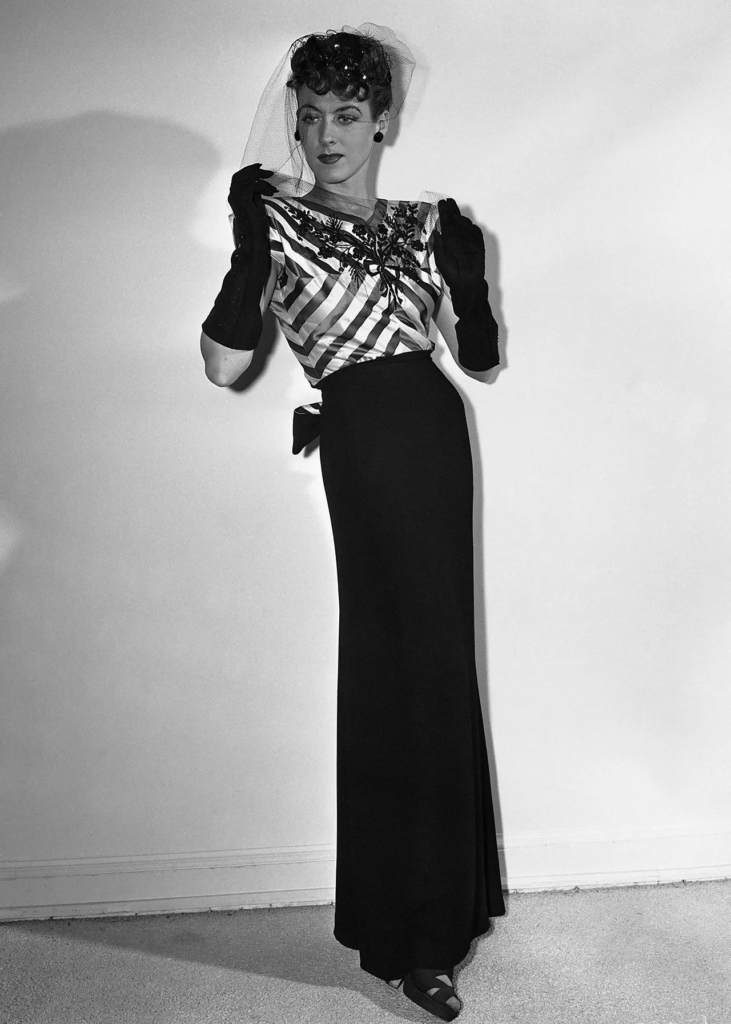
First Fashion Calendar
Ruth Finley, who worked as Eleanor Lambert’s PR Assistant, was another central character in the New York’s fashion week. She launched the Fashion Calendar.
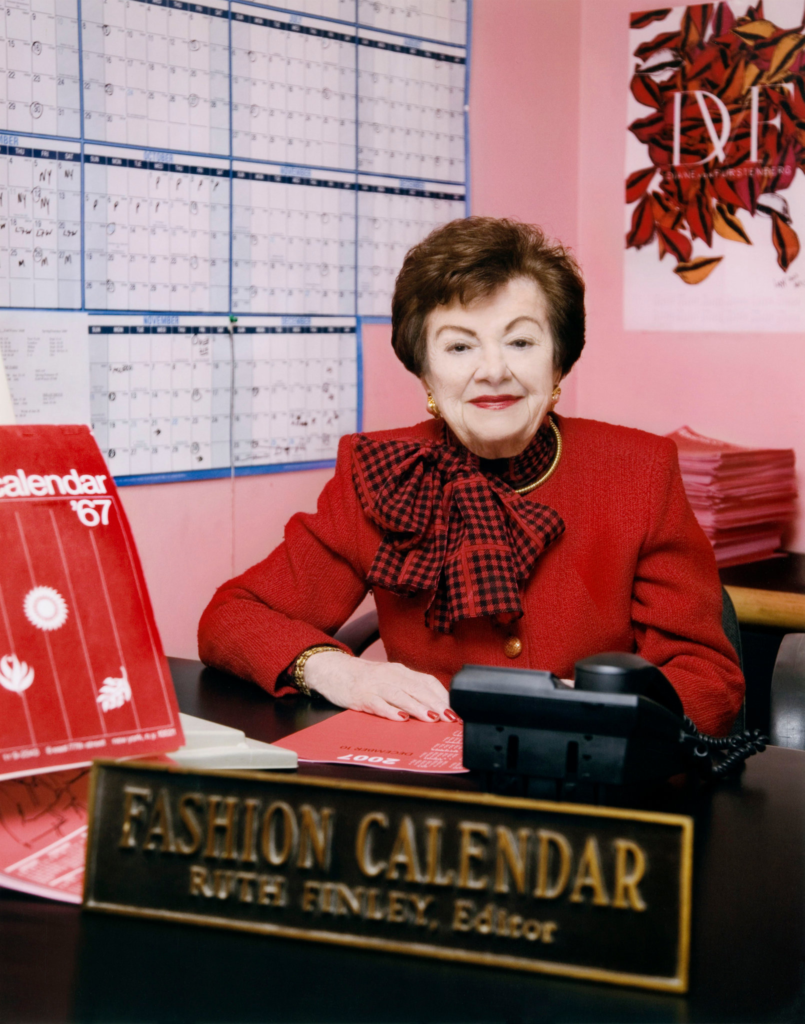
The idea came to Finely when she overheard two frustrated fashion writers debating between a Saks Fifth Avenue and Bergdorf Goodman event. The event was scheduled on the same night. Finley saw there was an opportunity to organize these fashion events in the way that designers’ show times didn’t clash. So, she started publishing little pink books under the name of Fashion Calendar.
The Fashion Calendar set the model for how fashion weeks are replicated around the world today. It brings together buyers, manufacturers, designers, and editors in the same period. Designers (both established and new ones) had 15 minutes to present their collections to VIP guests. These VIP guests attend many shows back to back. So it was important for the designer to stand out. The designers had to create a strong impression in a short amount of time. There is a documentary about Finley’s story Calendar Girl released in 2022. If you want to learn more about this historic event that changed how fashion weeks are held.
In 2014, the Council of Fashion Designers of America (CFDA) acquired the Fashion Calendar. They took over the Official New York Fashion Week Schedule.
When was the CFDA created?
Eventually, fashion week’s importance started to grow in the United States, as well as the importance of fashion design itself. And so, Eleanor Lambert formed the Council of Fashion Designers of America in 1962. This non-profit association raised funds for charity and industry initiatives and allowed American fashion to grow in the world’s economy.
7th On Six
In the 60s, fashion shows started to be produced and look like the ones we are familiar with today, and also grow in size. Fashion shows took place in the same period but not in the same place. This caused a lot of frustration for buyers and editors who had to go from one part of the city to the other to be present at these events. So considering this inconvenience, Stan Herman and Fern Mallis, president and executive director of the CFDA, decided in 1993 to centralize shows at Bryant Park in the famous white tends and rebranded the event “7th on Sixth”.
The first designers to show at Bryant Park were those who were at the peak of their fame in the 1990s. The list included names like Calvin Klein, Donna Karan, Tommy Hilfiger, Ralph Lauren, Anna Sui, Carolina Herrera, Isaac Mizrahi, and Todd Oldham.
They invited the original supermodels – Cindy Crawford, Naomi Campbell, Linda Evangelista, and Christy Turlington – as well as famous fashion editors and celebrities to attend the event in the front row.
The move to Bryant Park led to corporate sponsorship opportunities, and the biannual event was rebranded Mercedes-Benz Fashion Week in the late 1990s.
New York would remain the only Fashion Week until 1958 when Milan Fashion Week was established.
Milan Fashion Week History
Italy’s first fashion capital
Before Milan became Italy’s fashion capital (fun fact: Milan is the only fashion capital that is not an actual capital), the country’s fashion scene emerged at the Palazzo Pitti in Florence with the runway organized in 1951 by the Italian aristocrat Giovanni Battista Giorgini who held fashion shows at his own residence with designs from Emilio Pucci and Fontana sisters, and then at Sala Bianco in Palazzo Pitti. For the first time, Italy received buyers from major American retailers such as Saks Fifth Avenue and Bergdorf Goodman, as well as journalists and photographers from all over the world.

When was Milan Fashion Week founded?
The event in Florence was such a success that it caused a huge traffic problem in the city. Unable to deal with the influx of people coming from all around the world, it was decided that fashion shows had to move to Milan. And so, Milan Fashion Week was founded by the Camera Nazionale della Moda (The National Chamber for Italian Fashion) in 1958.
Camera Nazionale della Moda
Originally known as the “Camera Sindacale della Moda Italiana”, you would be surprised that the Chamber was initially set up not in Milan but in Rome, in the Grand Hotel, Via Vittorio Emanuele Orlando 3. This was the forerunner of the body which subsequently became the “Camera Nazionale della Moda Italiana” – a non-profit Association that coordinates and promotes the development of Italian Fashion.
Milan represented the ideal location for many Italian luxury houses; being an industrial city, Milan had many production facilities nearby, making it convenient for brands to concentrate their operations there.
The 1970s and 1980s, the city welcomed many iconic Italian designers, including Miuccia Prada, Giorgio Armani, Dolce & Gabbana, and Gianni Versace, who helped to cement the city’s status as a sartorial capital.
Paris Fashion Week History
Although the actual fashion week didn’t begin in Paris, this city is considered to have introduced the idea of it through its “défilés de mode” or “fashion parades”. The concept? Shop owners would hire women to wear their designs in public spaces to attract future customers.
First show of Paris Fashion Week
The first Paris fashion week opened with the event known as The Battle of Versailles held on Nov 28th, 1973, at the Palace of Versailles in France. It was held as a fundraiser to raise money for the restoration of the royal residence, the Battle of Versailles was organized by the French Fashion Federation (Fédération Française de la Couture) and supervised by Eleanor Lambert, the founder of NYFW.
Battle because it was Paris Fashion vs New York Fashion even though this was not conceived as a competitive event. The event was the first time that collections of Haute Couture, prêt-à-porter, and menswear were showcased together in Paris. It was called “Battle” as a way to refer to the friendly competition between 5 American and 5 French designers – the first time American and French fashion met together.
Yves Saint Laurent, Emanuel Ungaro, Pierre Cardin, Hubert de Givenchy, and Marc Bohan for Christian Dior were representing France, and Anne Klein, (accompanied by her then 25-year-old assistant Donna Karan) Halston, Oscar de la Renta, Bill Blass, and Stephen Burrows were representing The United States.
Fédération de la Haute Couture et de la Mode
The Fédération de la Haute Couture et de la Mode was originally called Chambre Syndicale de la Couture, des Confectionneurs et des Tailleurs pour Dame (Chambre Syndicale for Couture, clothing manufacturers and tailors for women”. It was founded by Charles Frederich Worth – the father of haute couture – in 1868. On December 14th, 1910, it was renamed Chambre Syndicale de la Couture Parisienne. Then, following the decision taken on January 23rd, 1945 relating to the creation of the legally registered designation of origin ” Haute Couture “, the Chamber changed the name to the Chambre Syndicale de la Haute Couture. The only institutions to serve here are the ones that have received the designation, which those companies approved each year by a dedicated commission held under the aegis of the Ministry for Industry may become eligible for.
A month before the Battle of Versailles, two more Chambers were created on October 8th, 1973: Chambre Syndicale de la Mode Féminine (women’s fashion) and Chambre Syndicale de la Mode Masculine (men’s fashion).
On that same day, the Fédération Française de la Couture, du Prêt-à-Porter des Couturiers et des Créateurs de Mode was born. Since June 29th, 2017, it has been carrying the name Fédération de la Haute Couture et de la Mode.
The Federation is the governing body for the French fashion industry, helping to consolidate Paris in its role as a fashion capital. It is in charge of organizing and coordinating the well-known Paris Fashion Week and Haute Couture Week.
Unlike the other fashion capitals, Paris is the only one to have a Haute Couture week, in addition to the ready-to-wear ones (womenswear and menswear). You can learn more about haute couture in this article.
London Fashion Week History
British Fashion Council
Although various people claim to have launched London Fashion Week – one of whom is fashion PR Percy Savage, who staged his first London show, “The New Wave”, at The Ritz, which he soon followed with the “London Collections”, featuring designers such as Zandra Rhodes and Bruce Oldfield.
However, the official first London Fashion Week is considered to have been organized in 1983 by the British Fashion Council. It is a non-profit organization that promotes British fashion design worldwide. It introduced a Designer of the Year Award in 1984. The first winner was Katharine Hamnett) hosts the Fashion Awards every year in December. They has a range of different funds and projects to support emerging designers through the NEWGEN program and make a positive change in the fashion industry thanks to The Institute of Positive Fashion.
First fashion show in London
The first fashion show in London was held in a place you wouldn’t expect – in a car park in West London, with tents placed outside Kensington’s Commonwealth Institute. Betty Jackson, David Fielden, and John Galliano were some of the first designers to debut there.
The event was so successful that the UK government officially announced it would provide funding so that it could continue. Even the royals developed an interest in fashion shows. Princess Diana, for example, held a reception for various designers at Lancaster House in 1985. In addition, to the surprise of every attendant in 1986, Margaret Thatcher attended the show. She stayed there for the whole week despite being a busy person.
Credits: British Vogue
London Fashion Scene in the 90s
Despite a successful start, the 1990s resulted to be hard times for London’s burgeoning design scene. The excess of the 80s gave way to a recession in the 90s. And, with lower interest and less money to invest in shows, by 1992 London Fashion Week was reduced to just a small handful of designers showing at The Ritz. However, for fashion history, it was an important period. 1993 marked the first time that the late Alexander McQueen showed at London Fashion Week, followed by Stella McCartney in 1995.
In 1993, the BFC came to the aid of young designers by establishing the NEWGEN program, which supports emerging talent with both financial aid and mentorship to help their businesses take off.
Fashion Week Today
Although there are many fashion weeks around the world, only four are known as the “Big” ones: New York, London, Milan, and Paris.
The fashion capital opening the fashion month is New York, followed by London, Milan, and Paris closing the event.
Nowadays, Fashion Week takes place twice a year: in February, designers showcase their Fall/Winter collections. While in September, they present their Spring/Summer ones.
In addition to these traditional bi-annual shows, there is Men’s Fashion Week which is typically happens twice a year as well – in January and June.
Also, more and more designers show inter-seasonal collections, such as the Resort/Cruise (before Spring/Summer) and the Pre-Fall (before Fall/Winter).
There are also shows particular to each location. For example, most haute couture shows are held in Paris, while most bridal shows are held in New York.
We explain more in-depth about the different fashion weeks in this article.
Nowadays, designers experiment a lot with locations, trying to stand out. Fashion shows are more than the presentation of collections on the runway. They also include after-parties, showrooms, and streaming on social media. Also, different events to make the fashion show a more complete experience for the audience who attends it to immerse themselves more in a brand’s world. Designers today are only limited to their imagination. They have different tools to experiment with and create a memorable fashion show.
If you enjoy learning about the history of fashion and want to know more, sign up here for the Inside the fashion industry online course.




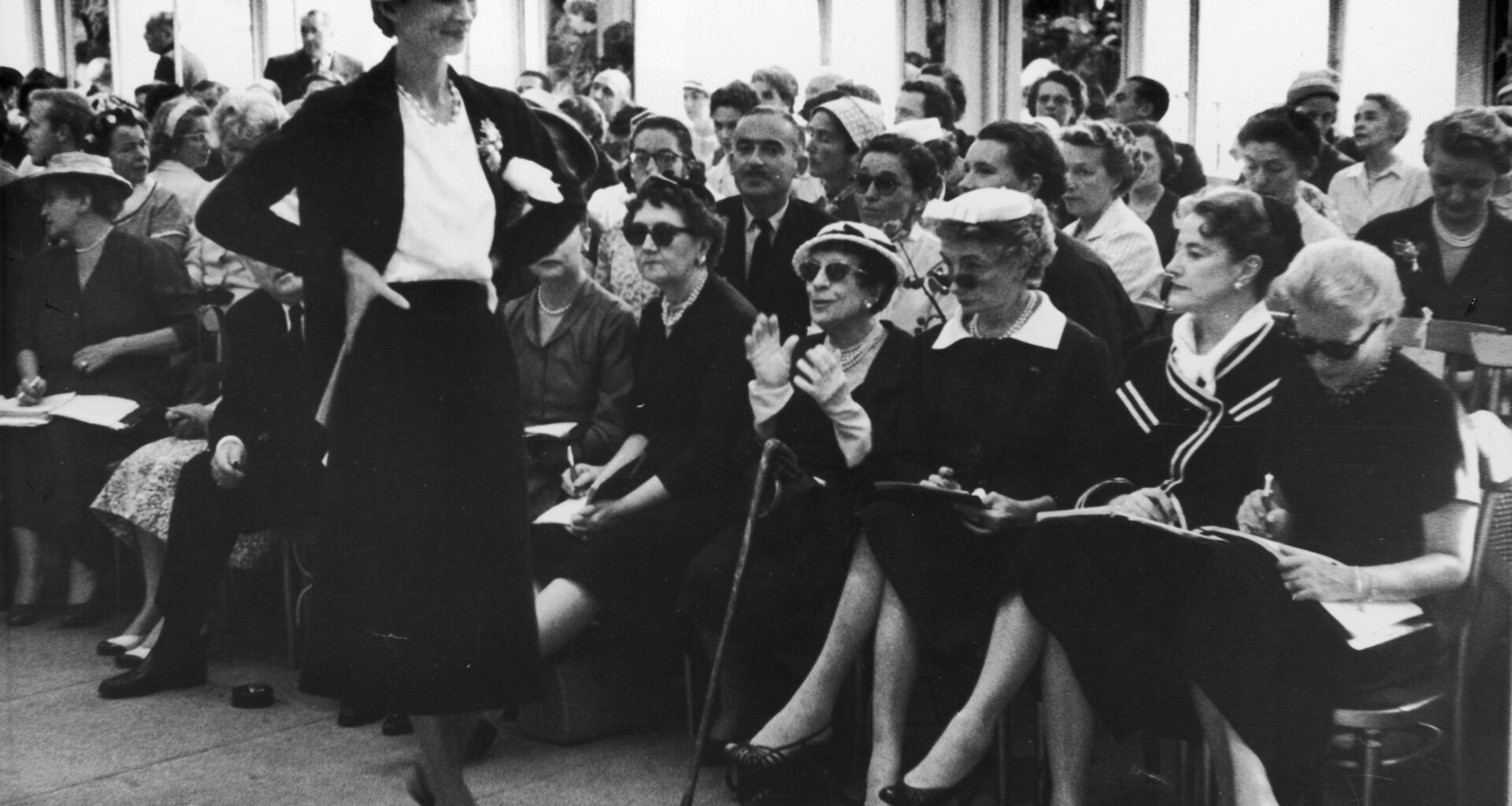
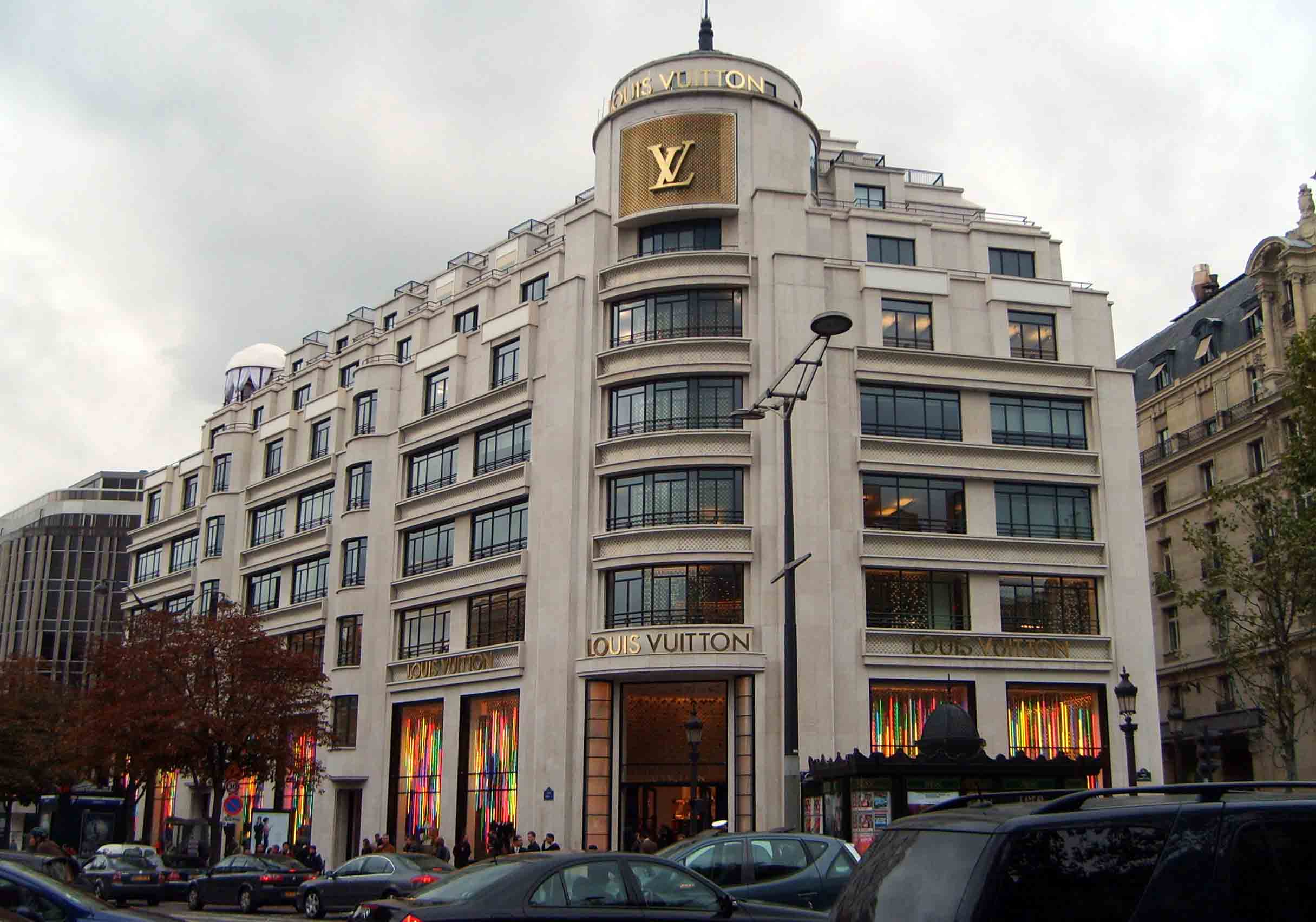
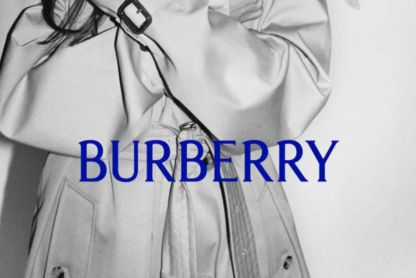


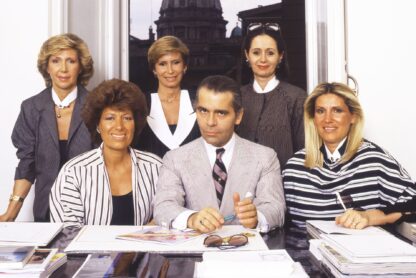
I love the article to be very honest.